4 Herbs You Can Grow in Dark Kitchens - Who Needs Natural Light Anyways?!
There are a few herbs you can grow in dark kitchens, and you don't need south facing windows for an indoor garden. Plant experts explain
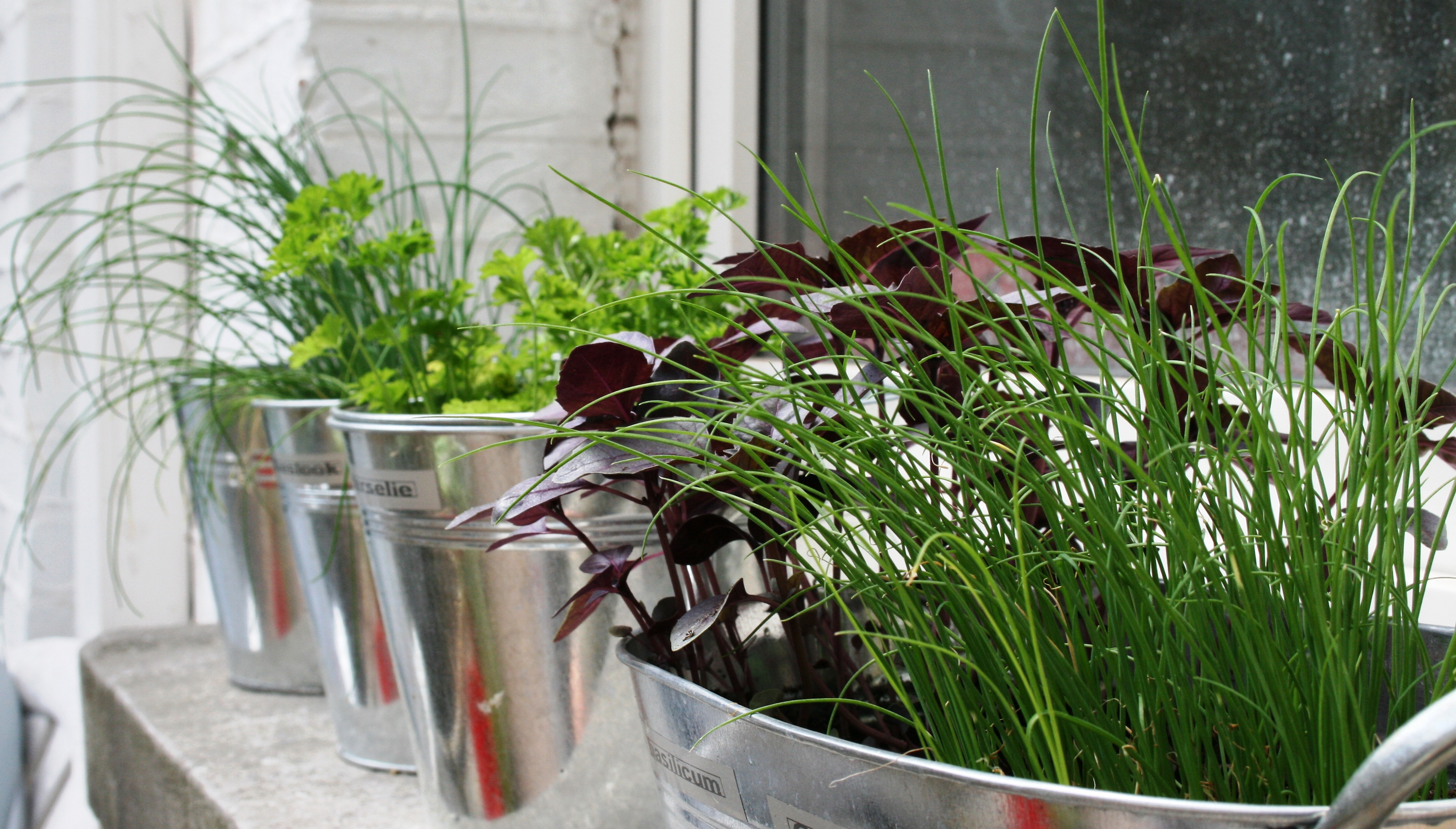
A plentiful supply of mint, sage, basil and other flavorful plants is pretty much guaranteed from a herb garden during the summer, but what about in winter? Thankfully, there are herbs you can grow in dark kitchens.
Yes, it's still possible to have an indoor garden with a fresh supply of home-grown herbs even when the natural light is low. A window sill should suffice for most indoor gardeners. However, serious growers may want to supplement with artificial lights.
'When I teach classes about growing vegetables, microgreens, and herbs indoors, the question of lighting always comes up first, no matter how early I put it into my talk,' says Elizabeth Millard, author of The Indoor Kitchen Gardening Handbook.
'Herbs need at least five hours of light per day to stay healthy, and full-on sunshine (provided the area isn’t too hot) is ideal.
'But in the winter, even a south-facing window might not be enough. If you are seeing sluggish growth, try extending the time that the herbs are under light, up to fourteen hours.
'I promise, you don’t need special, expensive grow lights. All you may need are full-spectrum fluorescent bulbs, similar to what you see in office buildings. These are found in any hardware store and are called various names like utility lighting or shop lighting.'
Herbs you can grow in dark kitchens
1. Chervil
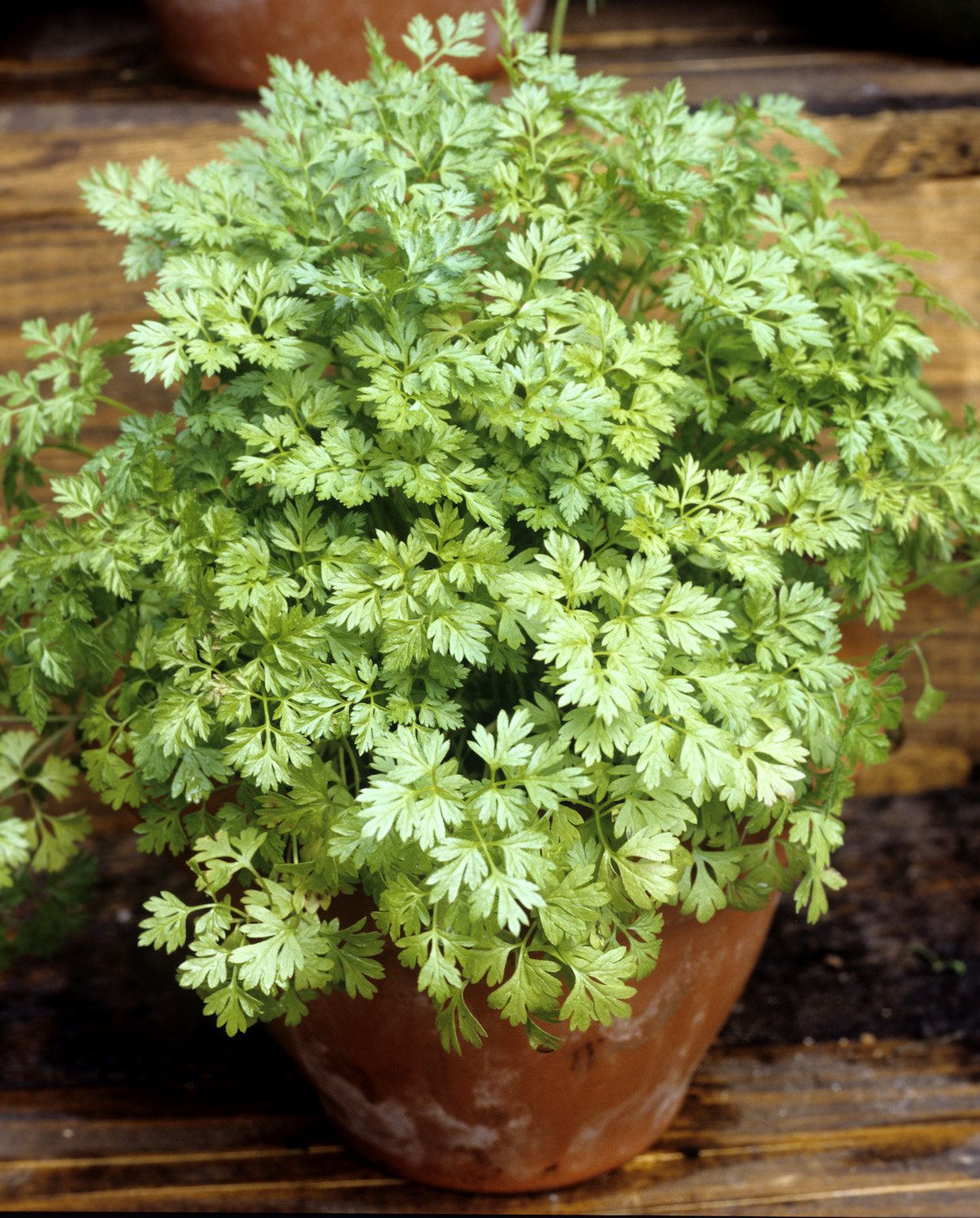
Popular in French cooking and commonly used in a classic Béarnaise sauce, Chervil has delicate foliage and a milder taste than parsley, with a hint of aniseed.
'Fairly uncommon in an herb garden, but quite delicious, chervil is related to parsley and has a subtle flavor,' says Elizabeth Millard.
'This herb does well in low-light areas, making it a nice choice for kitchen corners and out-of-the-way spots, but keep in mind that it doesn’t do well when temperatures begin to rise beyond 70 degrees, so gauge your house’s temp before planting indoors.'
Happily, chervil seeds are less than $6 and really easy to grow.
2. Parsley
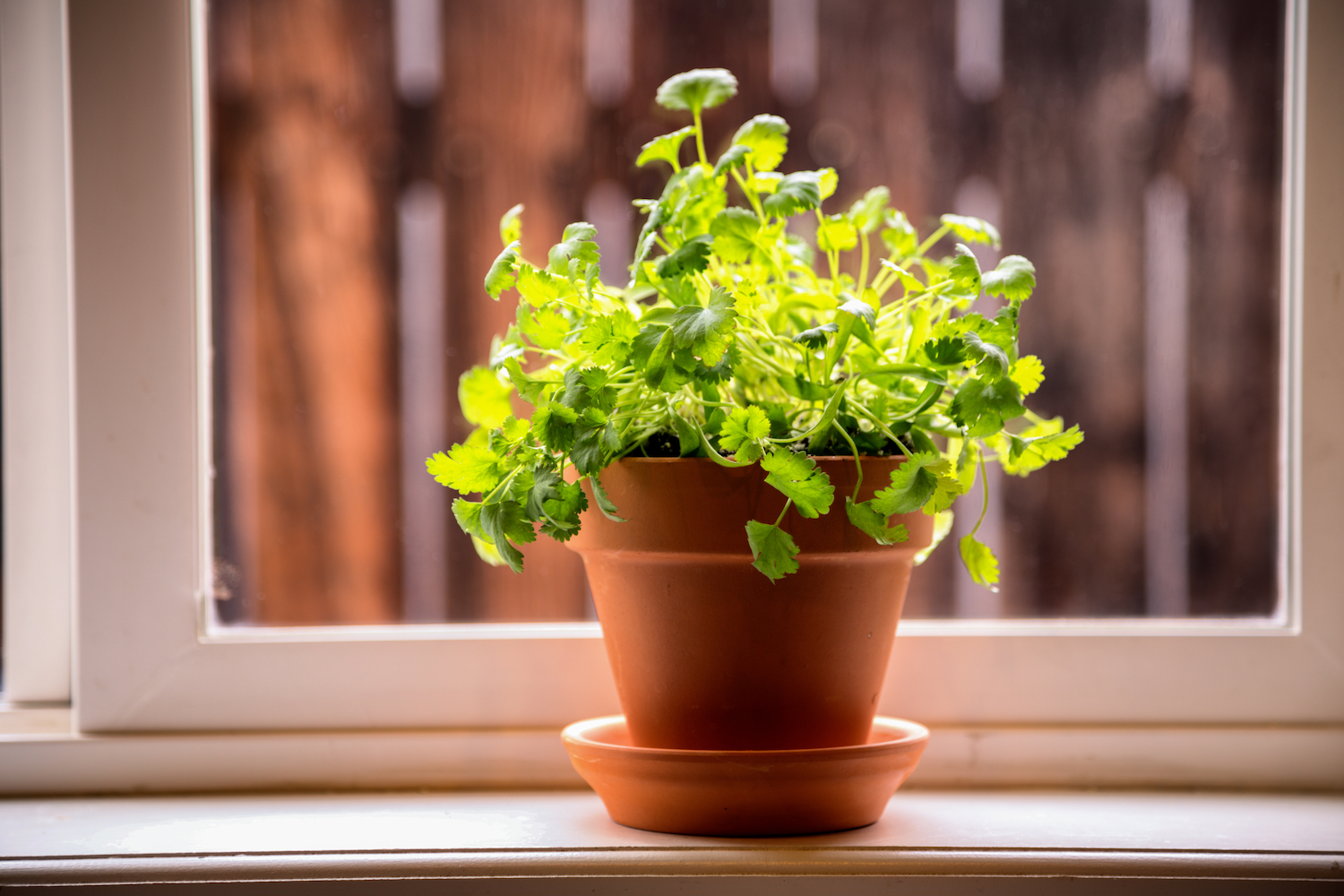
'Parsley is delicious in soups, salads, and as a topper on any vegetable dish. It can be grown in lower-light situations too,' says California-based Christy Wilhelmi, garden designer and founder of Gardenerd. 'Ideally no less than 4 hours of sunlight, but in some cases the plant can tolerate more shade.
'Check where light falls throughout the day to determine how much direct sunlight the spot receives versus ambient light.
'Direct light is best, but if you can figure out a way to bounce light from somewhere else, the plants will benefit from that exposure.' When it comes to what herbs grow best in the kitchen, this is generally one of the easiest. 'Though if your dark kitchen is north-facing, that's tricky, but if the building next door is painted white or a light color, you will benefit from reflective light from those walls.'
Parsley seeds are under $5, here.
3. Chives
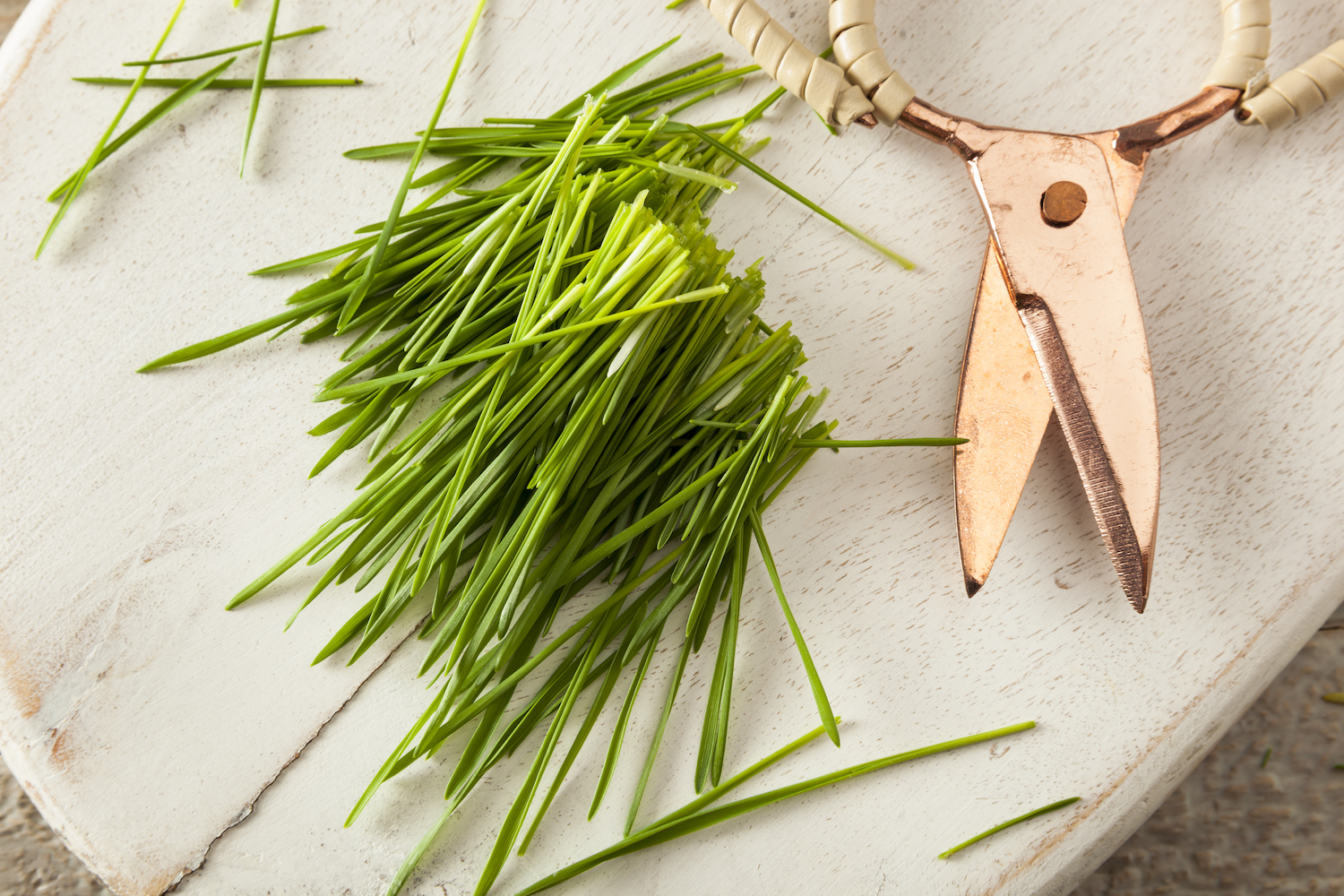
Chives area great addition to an indoor herb garden and can be used for flavor in cooked dishes or as a garnish.
'Chives can survive in lower light conditions and are a favorite in scrambled eggs, offering a hint of onion flavor when fresh spring onions aren't available,' says Christy.
'Supplemental lighting will increase your odds of success if the days are particularly gloomy. Use full-spectrum light bulbs in an overhead lamp close to the leaf surface for best results (no more than 3" above leaf surfaces).
'Leave the light on 12-16 hours a day for the healthiest plants. We like to rig the lamp to a vacation timer to automatically turn on and off so we don't have to think about it.'
Chive seeds are just under $5, here.
4. Cilantro
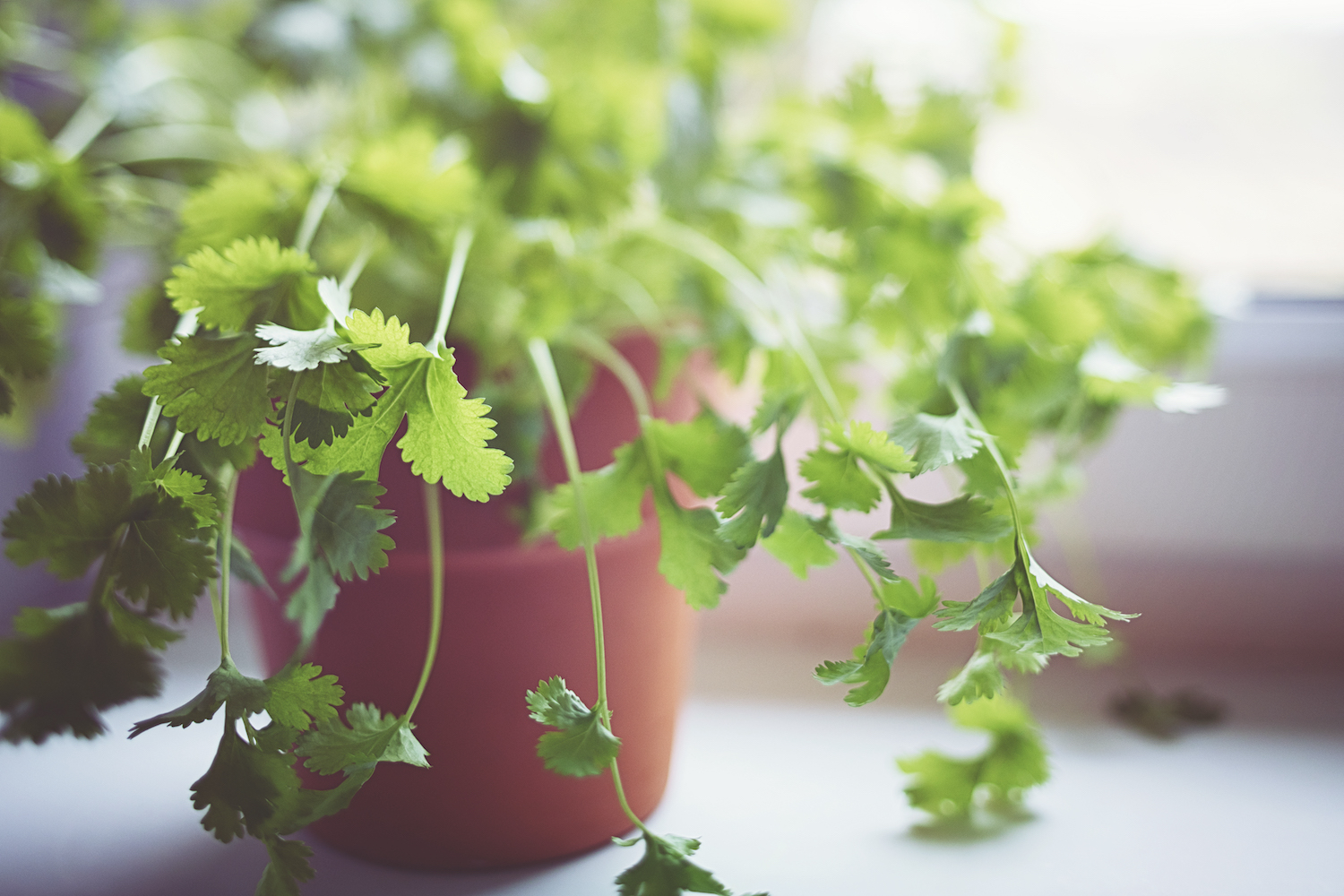
A staple in many Asian dishes, Cilantro has a strong and distinct flavor that enlivens curries, stir fries, soups and other recipes. It can also grow in pots in your kitchen.
'Direct light is always best in cooler weather, and a sunny windowsill will be better for growing Cilantro than dappled light,' says Christy. 'Cilantro is a cool-season herb, meaning it doesn't like too much heat.
'If it gets stressed out it can bolt to seed (make a flower stalk and stop growing). Daily water is good for most indoor plants, especially if the heater is on in the house. Plants dry out more quickly in those conditions.
'I tell people to use the finger test for watering. Insert your finger up to the top knuckle in the soil. When you remove it, if soil is moist and clinging to your finger, you don't need to water.
'If the soil is dusty and not sticking, it needs water. There are no hard and fast rules for watering because it is completely condition-dependent.'
Be The First To Know
The Livingetc newsletters are your inside source for what’s shaping interiors now - and what’s next. Discover trend forecasts, smart style ideas, and curated shopping inspiration that brings design to life. Subscribe today and stay ahead of the curve.
Jacky Parker is a London-based freelance journalist and content creator, specialising in interiors, travel and food. From buying guides and real home case studies to shopping and news pages, she produces a wide range of features for national magazines and SEO content for websites
A long-time contributor to Livingetc, as a member of the team, she regularly reports on the latest trends, speaking to experts and discovering the latest tips. Jacky has also written for other publications such as Homes and Gardens, Ideal Home, Red, Grand Designs, Sunday Times Style and AD, Country Homes and Interiors and ELLE Decoration.
-
 Turns Out the Coolest New Café is Actually In Your Kitchen — Here's How to Steal the Style of TikTok's Latest Trend
Turns Out the Coolest New Café is Actually In Your Kitchen — Here's How to Steal the Style of TikTok's Latest TrendGoodbye, over-priced lattes. Hello, home-brewed coffee with friends. TikTok's 'Home Cafe' trend brings stylish cafe culture into the comfort of your own home
By Devin Toolen Published
-
 5 Bathroom Layouts That Look Dated in 2025 — Plus the Alternatives Designers Use Instead for a More Contemporary Space
5 Bathroom Layouts That Look Dated in 2025 — Plus the Alternatives Designers Use Instead for a More Contemporary SpaceFor a bathroom that feels in line with the times, avoid these layouts and be more intentional with the placement and positioning of your features and fixtures
By Lilith Hudson Published